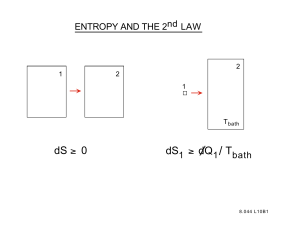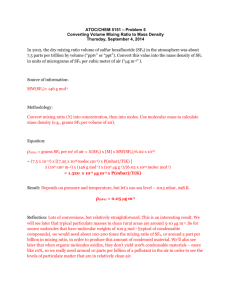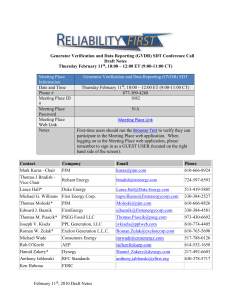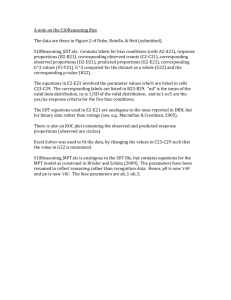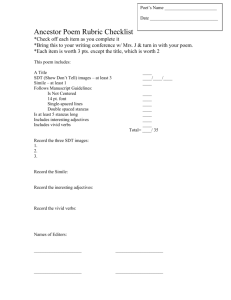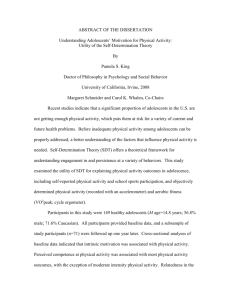SF6 Handling Procedures
advertisement
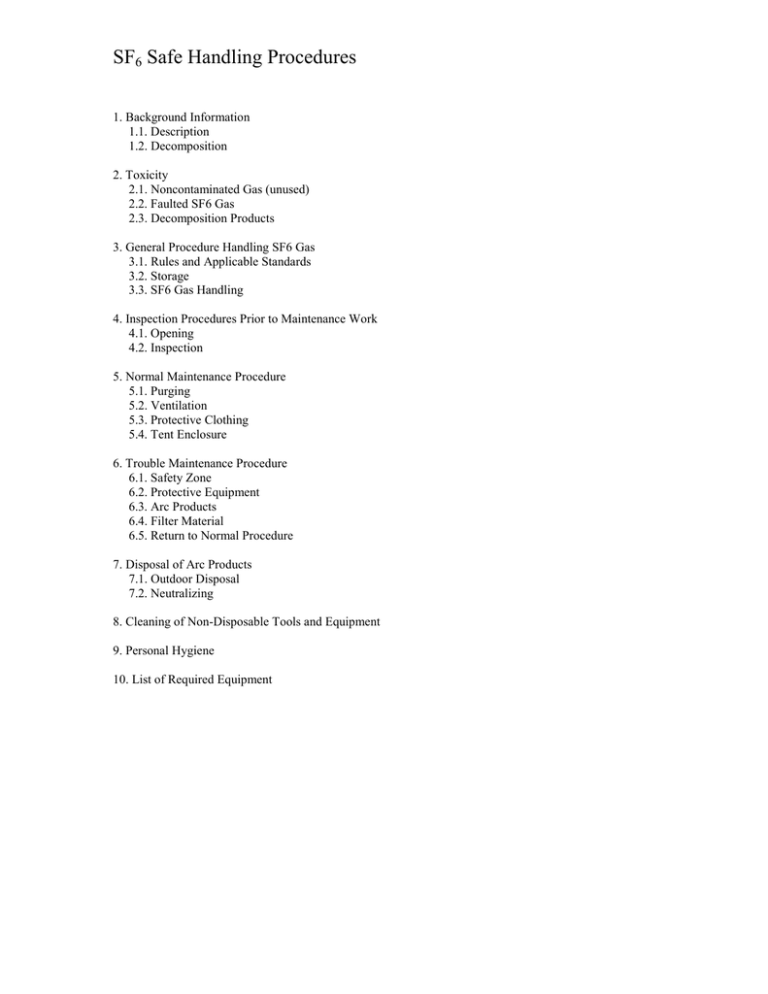
SF6 Safe Handling Procedures 1. Background Information 1.1. Description 1.2. Decomposition 2. Toxicity 2.1. Noncontaminated Gas (unused) 2.2. Faulted SF6 Gas 2.3. Decomposition Products 3. General Procedure Handling SF6 Gas 3.1. Rules and Applicable Standards 3.2. Storage 3.3. SF6 Gas Handling 4. Inspection Procedures Prior to Maintenance Work 4.1. Opening 4.2. Inspection 5. Normal Maintenance Procedure 5.1. Purging 5.2. Ventilation 5.3. Protective Clothing 5.4. Tent Enclosure 6. Trouble Maintenance Procedure 6.1. Safety Zone 6.2. Protective Equipment 6.3. Arc Products 6.4. Filter Material 6.5. Return to Normal Procedure 7. Disposal of Arc Products 7.1. Outdoor Disposal 7.2. Neutralizing 8. Cleaning of Non-Disposable Tools and Equipment 9. Personal Hygiene 10. List of Required Equipment SF6 Safe Handling Procedures Purpose and Scope The safe working practices in this volume outline the procedures required to perform installation, inspection, and maintenance work safely on SF6 gas-insulated apparatus. SAFE HANDLING PROCEDURES FOR SF6 EQUIPMENT Section 1. Background Information 1.1. Description. 1.1.1. General Description. Sulfur hexafluoride (SF6) is an excellent gaseous dielectric for high-voltage power applications. In its normal state it is odorless, tasteless, non-toxic, non-corrosive, nonflammable, and chemically inert. SF6 serves as an insulating and arc-extinguishing media. 1.1.2. Dielectric Strength. Its dielectric strength is 2 to 3 times that of standard air and has high thermal stability. The dielectric increases with increasing pressure and at 3 atmospheres, the dielectric strength is roughly equivalent to insulating oil. These properties make it useful in gas-insulated buses and compartments, which contain electrical switchgear components. 1.1.3. Arc Quenching. SF6 is approximately 100 times more effective than air in quenching spurious arcing. In power circuit breakers, its self-healing properties enable it to regenerate itself following arc interruption. 1.1.4. Physical Properties. Some SF6 properties from ASTM Standard Specification for Sulfur Hexafluoride, D 2472 – 81, are shown in the table below. SF6 is one of the heaviest known gases with a density about 5 times the density of air under similar conditions. SF6 shows little change in vapor pressure over a wide temperature range and is a soft gas in that it is more compressible dynamically than air. The heat coefficient of SF6 is greater than air and its cooling characteristics by convection are about 1.6 times air. The vapor pressure characteristics of SF6 are such that at a temperature of below 50 ºF at a pressure of about 220 lbs/in2 the gas becomes a liquid. On the lower end of the vapor pressure curve the gas becomes a liquid at -20 ºF at 60 lb/in2. This characteristic becomes important considering the fact that arc extinguishing pressure will be reduced as the gas liquidifies. Power circuit breakers operating at the higher pressure have heaters to maintain SF6 in a gaseous state. Requirements Water content, max dew point ºC Hydroyxable fluorides, expressed as HF acidity, max p/m by weight Air, expressed as N2, max, weight % Carbon tetrafluoride, max, weight % Molecular weight Property -45 (Corresponds to a water content of 8.9 p/m by weight or 71 p/m by volume) 0.3 0.05 0.05 146± 2% 1.2. Decomposition. SF6 gas will pyrolyze at temperatures above 500 K (277 ºC, 440 ºF). It should not be subjected to high temperature energy input, such as: cigarette smoking, electric heater filaments, welding, cutting torches, electrical discharges, and arcs SF6 Safe Handling Procedures Section 2. Toxicity 2.1. Noncontaminated gas (unused). SF6 gas is odorless, tasteless, colorless, and non-toxic in its pure state. SF6 gas is approximately five times heavier than air and tends to collect in low places, in buildings or equipment. This collection can reduce oxygen levels and can cause suffocation. Suffocation can occur without warning if the oxygen content of air breathed is reduced from the normal 20% to less than 13%. The maximum concentration at a work place, assuming that a person spends 8 hours per day there, is 1000 ppm (or 0.1%) by volume. 2.2. Faulted SF6 Gas. Electric arcs in SF6 gas form toxic gases, which, in the presence of moist air, have the characteristic odor of rotten eggs. Inhaling the gases can cause nausea, drowsiness, breathing difficulty, damage to the respiratory system and body organs, and death depending on the exposure level and the person's susceptibility. 2.3. Decomposition Products. Decomposition products of SF6 gas may be in the form of gases or powders. Solid decomposition products are normally metal flourides in the form of white, tan, or gray powder. Solid decomposition products in the form of powders are very fine and may not always be detected by the human eye, especially when airborne. Skin contact with such powders should be avoided as it may cause rashes, severe irritation, and death. Inhaling airborne dust should be avoided, since as with gaseous products, it may cause breathing difficulty, damage to the respiratory system, and death. Airborne dust can in addition cause eye irritation. Section 3. General Procedure Handling Sf6 Gas 3.1 Rules and Applicable Standards. All compressed gases should be procured, transported, stored, and handled only in cylinders or containers that are fabricated, tested, maintained, and marked in accordance with the applicable specifications and requirements of the Department of Transportation (DOT). Cylinder or container valves should also meet these requirements and should be fitted with removable protective caps. The Department of Transportation requires periodic pressure tests. The neck and cap shall not be used for lifting containers (including weighing) except for the use of hand trucks, which grip the cylinder cap for lifting on to the hand truck. Where appropriate lifting attachments have not been provided on the container, suitable cradles or platforms shall be used for lifting. All compressed gas-cylinder, valve outlet and inlet connections should be in accordance with the American Standard Gas Cylinder Valve Outlet and Inlet Connections, published by the American Standards Association (ASA). 3.2. Storage. SF6 gas is supplied in pressurized cylinders, which like any gas cylinder is capable of being damaged or ruptured, by careless handling. Cylinders should never be left standing without secure protection against failing or being knocked over. Cylinders can develop accidental leaks. They should thus not be stored in an unventilated area where escaping gas can cause SF6 contamination build-up. 3.3. SF6 Gas Handling. SF6 gas handling, in filling or retrieval from SF6-insulated apparatus, should only be done outdoors, or, if indoors, with ventilating equipment in operation. Personnel in the area should refrain from smoking. No exposed heaters, flames, or arc-producing equipment should be used in the area while the gas is being handled. If when handling used SF6 gas, leakage results in the odor of rotten eggs being detected, personnel should evacuate the area unless equipped with respiratory equipment. Significant and audible leakage should not be tolerated at hose fitting, etc., due to the possibility of gas build-up in local or low areas. SF6 Safe Handling Procedures Section 4. Inspection Procedures Prior to Maintenance Work 4.1. Opening. After SF6 electrical apparatus has been in service, it should be assumed that hazardous products may be present. After evacuation and refilling with air at atmospheric pressure, the equipment should only be opened by personnel wearing, coveralls, gloves, foot covers, and supplied air-line respirator apparatus. See Section 9 for more information on this personal protective equipment. 4.2. Inspection. Upon opening, the equipment should be inspected for powder arc products. If none are found proceed as in Section 5. Normal Maintenance Procedure. If arc products are present proceed as in Section 6. Trouble Maintenance Procedure. Section 5. Normal Maintenance Procedure 5.1. Purging. Purge apparatus thoroughly with dry air from a suitable source. Avoid purging with very damp air or wet air as it can endanger integrity of insulation materials, and prolong dryout and reconditioning time. It is only safe to assume that there may be hazardous gaseous products present. All personnel should stand clear of the operation during purging. Allow purging to continue for a time period sufficient to ensure a minimum of 10 complete air changes through the total apparatus before working on the equipment. If it is has been impossible to evacuate the SF6 from the apparatus prior to purging a minimum of 100 air changes shall be employed. 5.2. Ventilation. Reduce purging air supply to a low level (About 10 air changes per hour) to provide continuous ventilation of the apparatus while personnel are working internally in the apparatus. 5.3. Protective Clothing. Protective clothing is not necessary in normal maintenance work except as called for to maintain cleanliness of internal parts of the apparatus, however it is recommended that protective clothing be worn. 5.4. Tent Enclosure. If a tent-like enclosure is used for weather protection around the apparatus, a dry air ventilation system shall be used to supply the enclosure. Section 6. Trouble Maintenance procedure 6.1. Safety Zone. If arc products or noxious odor is detected upon opening the apparatus, a restricted safety zone should be established around the equipment into which personnel are not allowed without protective gear. Note that outdoors a downwind zone may extend for considerable distance and low lying areas both indoors and outdoors present special problems. 6.2. Protective Equipment. For cleanup operations on the apparatus, qualified and assigned personnel shall wear full protective clothing and a supplied air full face respirator. 6.3. Arc Products. Powered arc products shall be removed by the use of a dedicated vacuum cleaner equipped with special in-line filters. Powered arc products that remain after vacuuming shall be completely wiped up with rags using approved cleaning solvents. Note that different solvents may be required for insulation and metallic surfaces. 6.4. Filter Material. Absorption filter material within the apparatus shall be removed and disposed as required in Section 7. 6.5. Return to Normal Maintenance Procedure. Proceed with the normal maintenance procedure after all arc products are neutralized or removed from the area. SF6 Safe Handling Procedures Section 7. Disposal Of Arc Products. 7.1. Outdoor Disposal. Disposal of solid arc products should be done outdoors since corrosive or toxic gases may evolve from the solid arc products or from the absorption filters. Disposal of filter material should be handled with extreme care, since there is a high concentration of arc products absorbed on the surface of these materials. Full protective equipment shall be worn during disposal. All materials used and retrieved in clean-up operations shall be placed in suitable large plastic or metal containers. Empty the vacuum cleaner housing and the absorption filter material into the container. Note or measure the volume of material in the container. 7.2. Neutralizing. In separate container (plastic pail), measure a volume of water 1.5 times that of the above refuse material. Empty the water into the container holding the powder, quickly for the first half of the water and slowly thereafter. Chemical reactions will result producing some heat and foam. Next measure a quantity of soda ash (sodium carbonate) or lime (calcium oxide) equal to at least onequarter the volume of the refuse. Shake this over and mix into the water-refuse material. Add to this and mix in all other contaminated disposal material including: solid arc products disposable protective clothing cleaning rags filters from respirators molecular sieve from breaker and gas cart vacuum filter elements Allow the refuse container to stand uncovered for 24 hours. If the solution tests at least slightly alkaline, the material is then harmless and may be disposed of in a normal manner, per local ordinances. If acidic, add additional soda ash or lime to neutralize prior to disposal. Section 8. Cleaning Of Non-disposable Tools And Equipment Prepare a mild (10%) lime or soda ash solution and use this to wash down any hand tools, protective gear and equipment employed in the clean-up operation. Sucking up some of this solution through the hose and into the vacuum cleaner will serve to neutralize particles adhering to this equipment. Rinse all washed tools and equipment thoroughly with water. Section 9. Personal Hygiene Upon completion of cleanup, personnel should wash all exposed body parts before changing into street clothes. In the event that a worker should become contaminated with the dust or there is a burning or irritating sensation, washing or a complete shower is recommended as soon as possible. SF6 Safe Handling Procedures Section 10. List Of Required Equipment Disposal Coveralls - "Tyvec", "Durafab" or equivalent - paper disposable with nylon reinforcing, complete with hood. Non-Disposable Neoprene Gloves - 14" - (Should be washed in water and allowed to drip dry after use.) Non-Disposable Rubber Boots - 17" - over the shoe style - (Should be washed and dried after use, same as gloves.) Respirator - full face Confo 11 or equivalent with twin cartridges for "Organic Vapors and Acid Gasses", i.e., GMC or equivalent. Dry Air Supply - Any type of clean, oil free dry air supply may be employed that is suited in delivery capacity to provide the purging and ventilating rates specified in Section 5. If an in-line high temperature heater is used, care must be exercised to avoid exposure of SF6 gas to the breaker. Supplied Air-Line Respirator - MSA "Pressure Demand" Type with "Ultravue" face piece and web beltmounted demand regulator, 50 ft. of air supply hose, manifold with quick-disconnect and automatic shutoff outlets, cylinder pressure regulator. Must have NIOSH/MESA Approval No. TC-19c-93, or equivalent from other manufacturer. Vacuum Cleaner - Industrial wet or dry type with non-metallic attachments, micro staphicidal filter elements (particles to 0.3 µm), 2-15" lengths of plastic hose and coupler. Respirable Compressed air - 300 lbs. approved portable tank with air meeting Grade D, ANSI Standard Z86.1-1974 with supply hose inlet pressure between 80 to 100 lbs/in2. Cleaning Solvent - Employ only cleaning solvents that are specified for use in maintenance or installation procedures (isopropanol and trichloroethane have been used successfully). Note that different solvents may be specified for cleaning insulation and metallic components.
